Week 7: Curatorial Analysis- Hunterian and Tramway Gallery Exhibition Comparison.
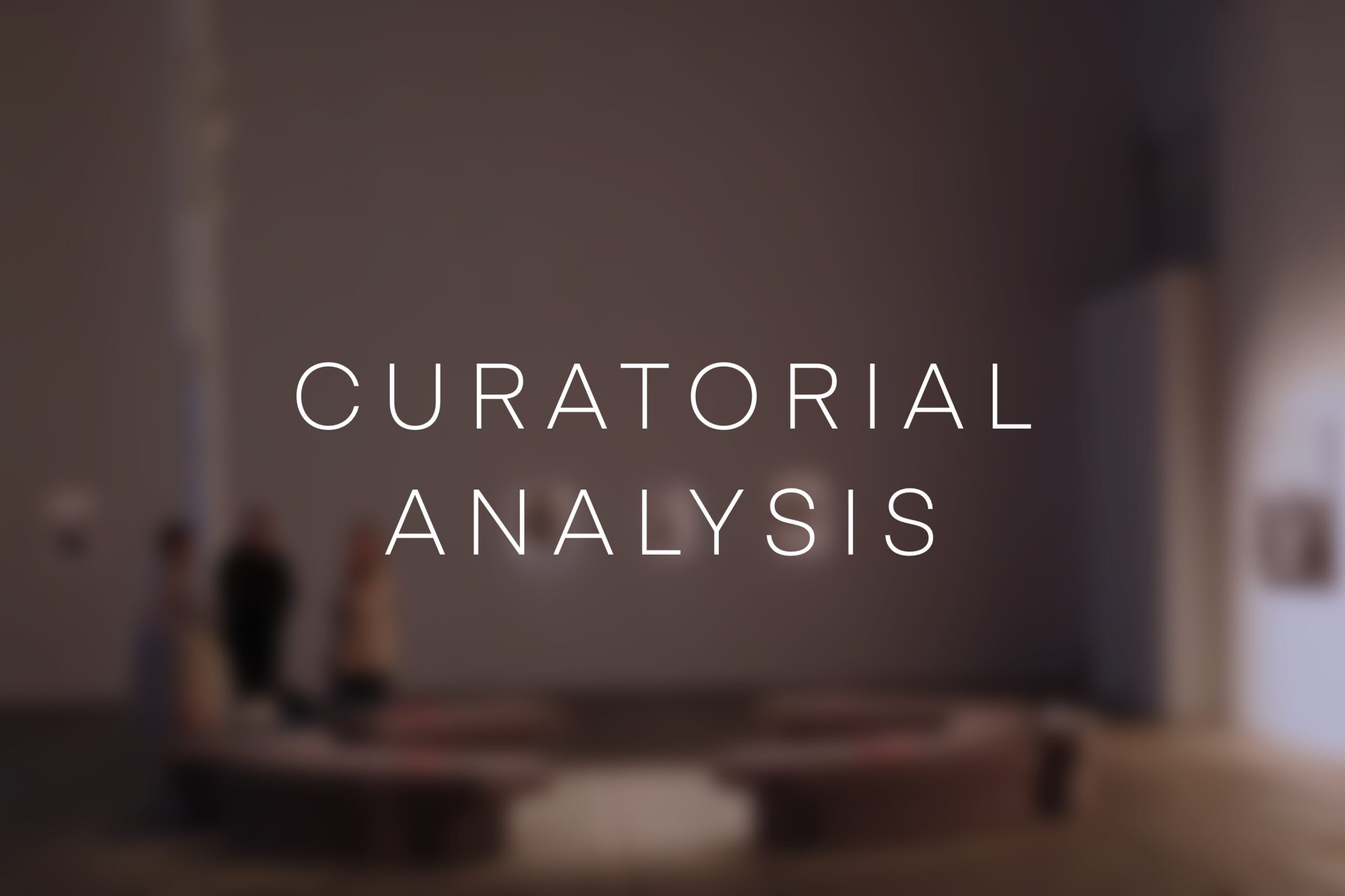
On Wednesday, the 5th of March, as a group, we attended a selection of exhibitions around the city of Glasgow. Amongst these were the Derek Jarman exhibition at the Hunterian Art Gallery, titled Digging in Another Time, and the Maud Sulter exhibition at the Tramway Gallery, titled You are my Kindred Spirit. Both exhibitions focus on the solo work of deceased artists, subverting the standard curatorial concerns that have typically emerged within Contemporary Art exhibition making. Listening to both talks by Claire Jackson (Tramway curator) and Dominic Patterson (Hunterian Gallery curator), I noticed the similar biographical focus that both professionals talked about with research into the histories of the individuals that contributed to the shaping of a solo exhibition. Patterson discussed how the work was arranged semi-chronologically, branching from one point of focus within Jarman’s life, when he was installed in the Third Eye Centre in Glasgow. Patterson discussed the curation in terms of Jarman’s life, exhibiting work that captures his artistic progression from his scenic student work until towards the end of his life, characterised by politically engaged textural work.
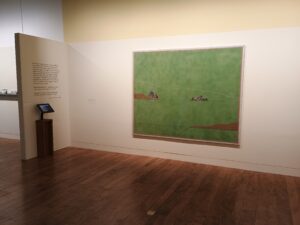
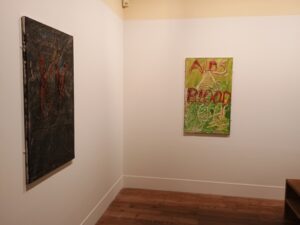
You Are My Kindred Spirit represents the elements of Sulter’s life in a more direct way, using family images, including Sulter’s mother, who was identified by Claire Jackson as being a prominent figure due to her role as a tram driver, connecting Sulter’s familial history and the curatorial space as a repurposed tram station. Pieces were also arranged with the idea of a personal family album in mind.
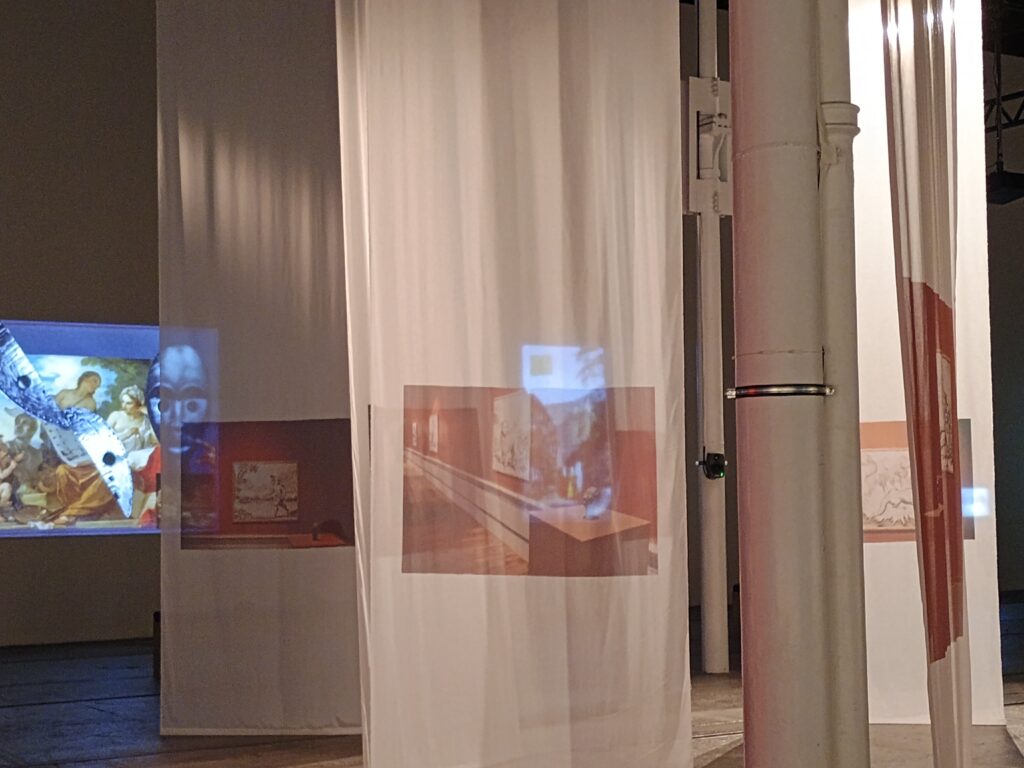
For both exhibitions, the curators bring light to the histories of the artists.
I mentioned in my previous analysis of the Rooting exhibition at Edinburgh University’s main library that the use of archival material is typically purposed for one of two perceptions. The first is the conjunction of historical pieces in the contexts of contemporary circumstances to make a critical statement about social issues or institutional histories. The second is the elevation of specific artists or objects to current awareness, challenging the art historiography that dominates the history of the art world. Despite both Sulter and Jarman having rich careers, I believe that both exhibitions take on the role of the latter use of archival work, bringing a contemporary awareness to these artists. Stemming from this, I noticed that the curatorial concerns become mixed. In Contemporary Art exhibitions, curators typically direct the interpretation and arrangement of art to cater to the audience experience, but as the exhibition takes on the biographical lens, the curator begins to make decisions that are more representative of the life or desires of the artist within the organization and development of work. In Digging in Another Time, even though his own film work was not displayed, histories of Jarman’s involvement with film and cinematic work were referenced with the commissioning of multiple film pieces. Furthermore, in Luke Fowler’s film piece Feeling Blue, imagery of Jarman’s work is avoided, instead exploring the house and garden that Jarman resided in at the time of his death. This was also the product of a residency in which Fowler was able to interact and understand the space, enabled with a grant from Creative Scotland. With a piece placed at the end of the exhibition, his work represents the exhibition. This collection takes the form of a portrait of Jarman, exploring a focus on the artist through the works that he created. Jarman becomes present throughout the exhibition space, as his art constructs the profile of an artist. The curatorial concern was not only about the communication of Jarman’s work to the audience but also to represent the artist himself to the audience.
Within You Are My Kindred Spirit, the presence of the artist takes on a different form. Sulter’s voice can be heard to permeate through the space as she reads a poem, broadcasted through a speaker system used in tandem with audio visual work. Initially, when observing this, I thought back to my previous research into the multisensory exhibition, where the sounds that we encounter in a space can directly affect our interpretation of the art. However, when asking the curator about this choice, Claire Jackson stated that the effect of the voice came as a secondary effect – imitating the original exhibition display that Sulter had for the piece. This is especially interesting to me as the values of the artist were prioritized over the audience experience. Like Digging in Another Time, the arrangement of Sulter’s work becomes representative of the artist and their original vision, rather than the typical narrative concerns Contemporary Art exhibitions are directed towards.
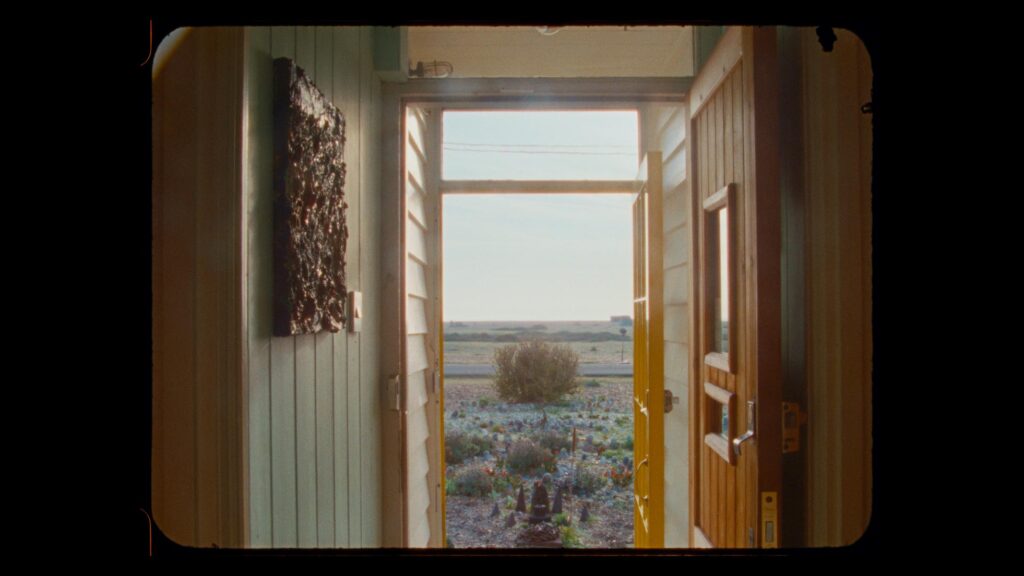
Luke Fowler, Being Blue (2023), Image sourced from:https://www.luke-fowler.com/works/being-blue/
Action:
Though my speculative project shares little in common with either of these exhibitions, I am prompted to reconsider the flexibility of curatorial theories. Though participatory curation has been the dominant concern in the Contemporary Art field, these exhibitions succeed by developing a dialogue with the work and the artist, creating their own responsive methodologies that best suit the representation of the included artistic pieces. I can consider what my curatorial concerns should be outside my preconceived restrictive ideas of exhibition procedure.
Bibliography:
- Caro, L. (2015). Moulding the Museum Medium: Explorations on Embodied and Multisensory Experience in Contemporary Museum Environments. ICOFOM Study Series, (43b), pp.55–70.
- Durukan, G. and Akmehmet, T. (2020). Uses of the archive in exhibition practices of contemporary art institutions. Archives and Records, pp.131–148.
- Henning, M. (2006). Museums, Media and Cultural Theory. Maidenhead, UK: Open University Press.
- Smith, B.C. (2020). Museums and the Embodied Mind: Sensory Engagement with Artworks and Architecture. Architectural Design, 90(6), pp.88–93.




Hi Harry, it’s great to read the close study of Precious Okoyomon, To See the Earth Before the End of the World (2022), Installation , Venice Biennale, with an excellent bibliography. Do you know the work of John Newling? While he is a senior artist he is also an educator and could feasibly be involved. Similarly, the next post on ‘communication and learning theory’, and ‘sensory experience’, is excellent, with a high level of analysis. Consider more sub-headings (along with Action, Bibliography), like these ‘concepts’ and ‘methods’ you point to, along with ‘Recap’ from previous post if you feel it’s necessary.
Your brilliant thematic map has the content for your project, the 5 texts could be simplified into themes, but I can also imagine for a different audience group this map as a graphic element in the space. I’ll send you my Arkive City project map as an example. As we move into Artist Identification the scale of your independent research, depth of understanding of curatorial field, and originality of your ideas comes to the fore, great work Harry. It appears you have learned from James Clegg’s presentation in your mapping if the project. Very good to see your space research, and Strange Field seems a good option. You move to review and reflect on Atlas Arts as a model for community and public engagement strategies, great application of course material to your work. Really strong fieldwork engagement with Rooting and Corpse Flower, and very interesting to see how the field trip may inform how you work with artists (which could influence your programme of events, and perhaps the curation). Very good to read the clear summary of the Collective meeting in Week 7 Harry, the strategy of group work sounds positive. Minor point: fully caption all images.
You did not add the peer reviews of other students to your Blog as requested did you complete them?
CURATORIAL PITCH SLIDES
Much has developed since your pitch, looking back at the slides, perhaps the Ethics is the main focus to build on (and build in) to your project: you identify sets of criteria to move forward with. Anthropocene is one of many terms for this period, and I’d encourage you to include the others in a web/network/rhizome of your thinking because your project is fundamentally non-centrist and heterogenous. Foucault’s heterotopia may be of interest too. I feel perhaps the question of your presentation is less about issues with the project, but how you summarise a very wide range of thinking and work into a short set of slides: design and graphics can be helpful here. Audiences/Publics stands out too as an area to have more work on: different modes of engagement through the art and public programme?, different depths: you don’t have to try to do everything, but good to have target groups in mind. Exhibition design and layout based on professional examples you have identified will also be important and come from putting site research, artwork selection and curatorial narrative together. Lastly, mapping out a rough budget (informed by rough ideas of equipment/production) can help feed back into your thinking at this stage, because you have come so far with the creative and critical content. Great work.